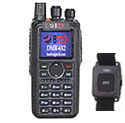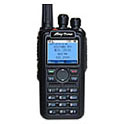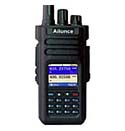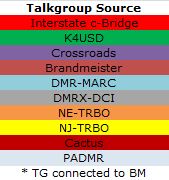Interstate Network
DMR c-Bridge
Serving SPa, MD, DC, NVa, DE
John KA3LAO - Network Administrator
John 'Miklor' K3NXU
|
What is the Interstate c-Bridge
It is the Server that routes the audio from an individual repeater to other repeaters in the local network. The c-Bridge is then networked other bridges creating the worldwide network we have today. The "Interstate Network" servers currently supports over 70 DMR repeaters in: - Maryland - Southern Pennsylvania - Northern Virginia - Delaware - Washington, DC The path that your DMR audio is directed is determined by the Talk Group (TG) selected. There are currently over 1500 TGs available, ranging from only your local repeater to worldwide groups. To assist with creating your code plug, I have attached two TG lists. The first is a list of TGs available on our network repeaters.
Next are Excel spreadsheets describing which TGs and TSs available on specific repeaters. There are currently two servers handling the traffic for out area.
Spreadsheets containing the following information in .jpg format can also be found at DelMarVaDMR.com under the Talk Groups tab. - Current DMR Repeaters active on the Interstate Network - Talk Groups available to individual repeaters - Time Slots where available TGs reside - Whether a TG is Full Time or PTT - Timeout settings for PTT Groups - Whether a TG is connected to Brandmeister - The network source for each TG Here are the definitions of the various fields. The spreadsheets are broken down into two sections.
The left side of the sheet shows the network repeaters. Light GREEN = VHF Light BLUE = UHF YELLOW indicates that this is a PTT group. To activate that TG, it is necessary to give a quick press of the PTT button. The TG will stay active for the amount of time shown, either 5 or 15 minutes. The timing cycle restarts after any PTT activity is detected. If no PTT activity is detected, the TG will return to the Off status. This will free the Time Slot (TS) for another user. Dark GREEN indicates that a TG is Full Time. These groups are always on and require no PTT to activate. RED indicates that the TG is not available on that repeater.
Each TG is listed by their Name and assigned Number. You will notice that some groups show an asterisk after the number. This indicates that the TG is cross connected to the Brandmeister network.
The color coding of the TGs above indicates their source.
Repeater Activity Repeater activity is not determined by its local traffic only. While Local activity may be low, statewide TGs will have moderate activity, while some nationwide TGs are very busy. Call Watch This allows you to see the active DMR traffic being passing through the network c-Bridges (Servers) Real-time. Call Watch Server 1 Call Watch Server 2 Call Watch Server 3 Peer Watch As shown in the above spreadsheets, not all repeaters carry the same traffic at the same time. Peer Watch allows you see which repeaters are currently carrying traffic on the c-Bridges. Green indicates which repeater is initiating the call. Red shows the repeaters that are linked at that time. Upper bar indicates traffic is on Time Slot 1. Lower bar indicates traffic is on Time Slot 2. Peer Watch Bridge 1 Peer Watch Bridge 2 Peer Watch Bridge 3 As there are 3 servers in the So Central cluster, active repeaters could overlap between the two lists. |
BTECH  DMR6X2 PRO Dual Band (Review) Anytone  D878UV II+ Dual Band (Review)  D578UV Series Mobiles Hotspot  SkyBridge MAX (Review) Ailunce  HD1 / GPS (Review) Amplifiers  BTECH DMR Amps UHF VHF (Review) Repeaters  Ham / GMRS Commercial Repeaters Duplexers |





